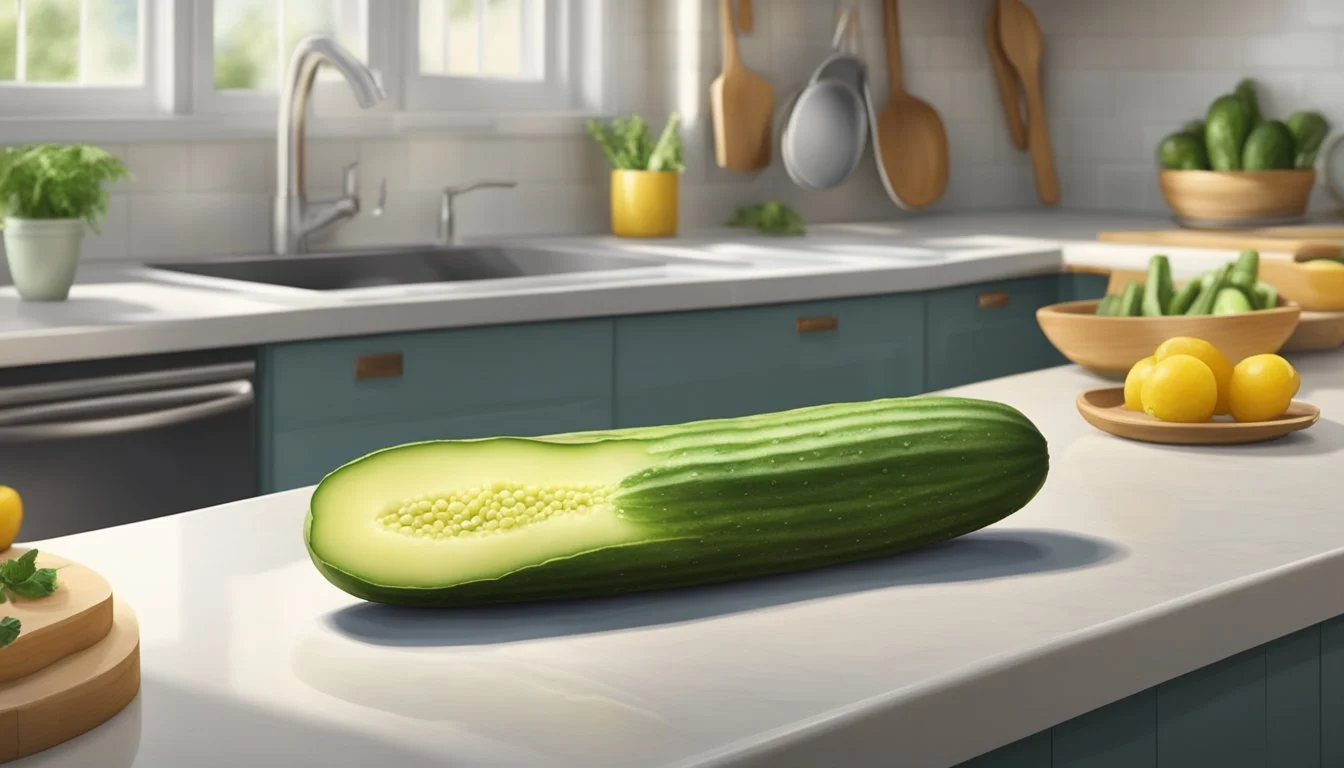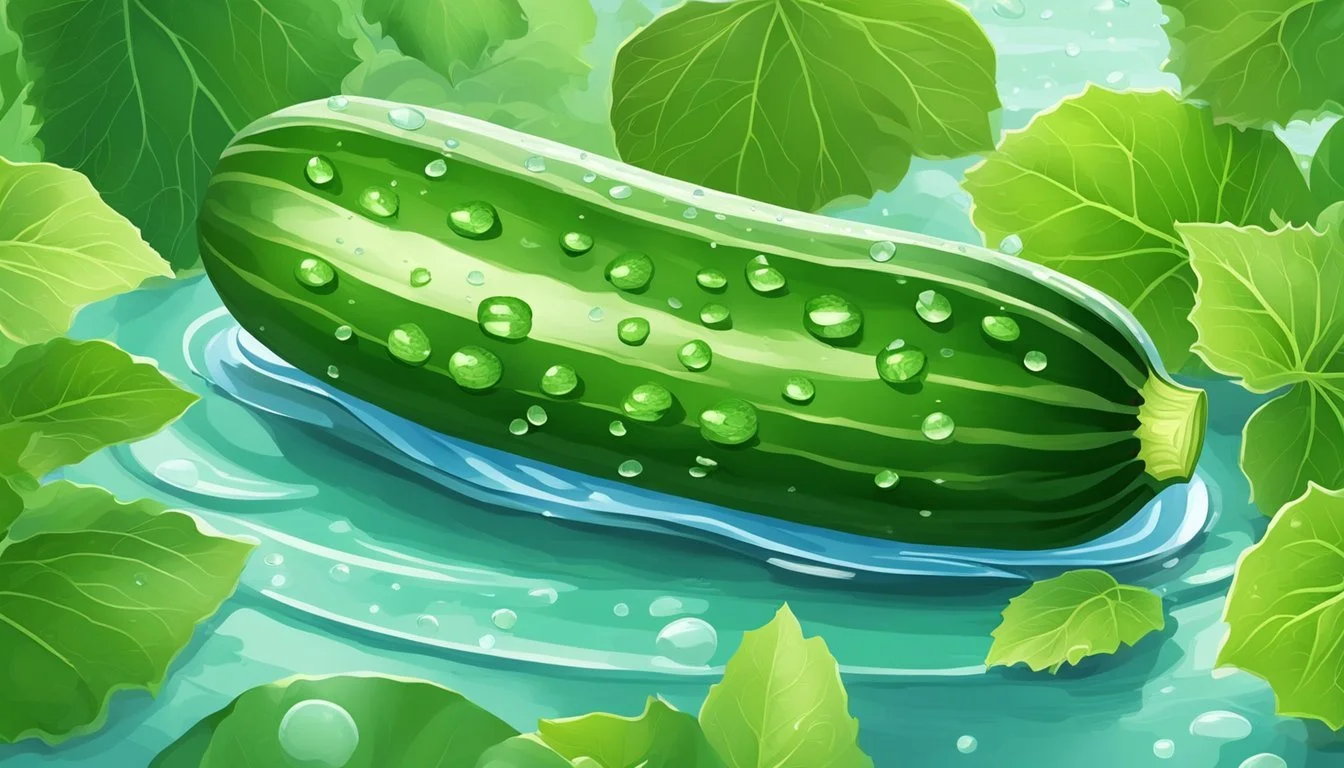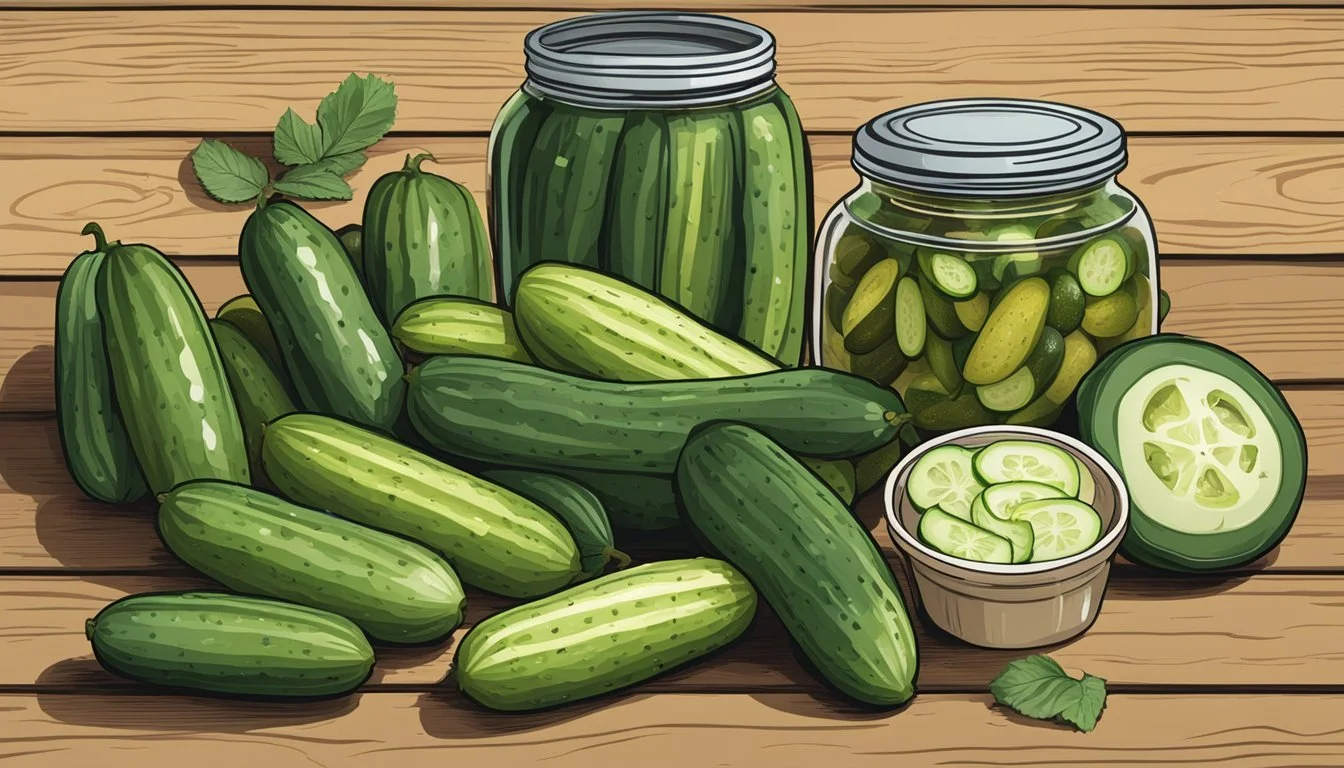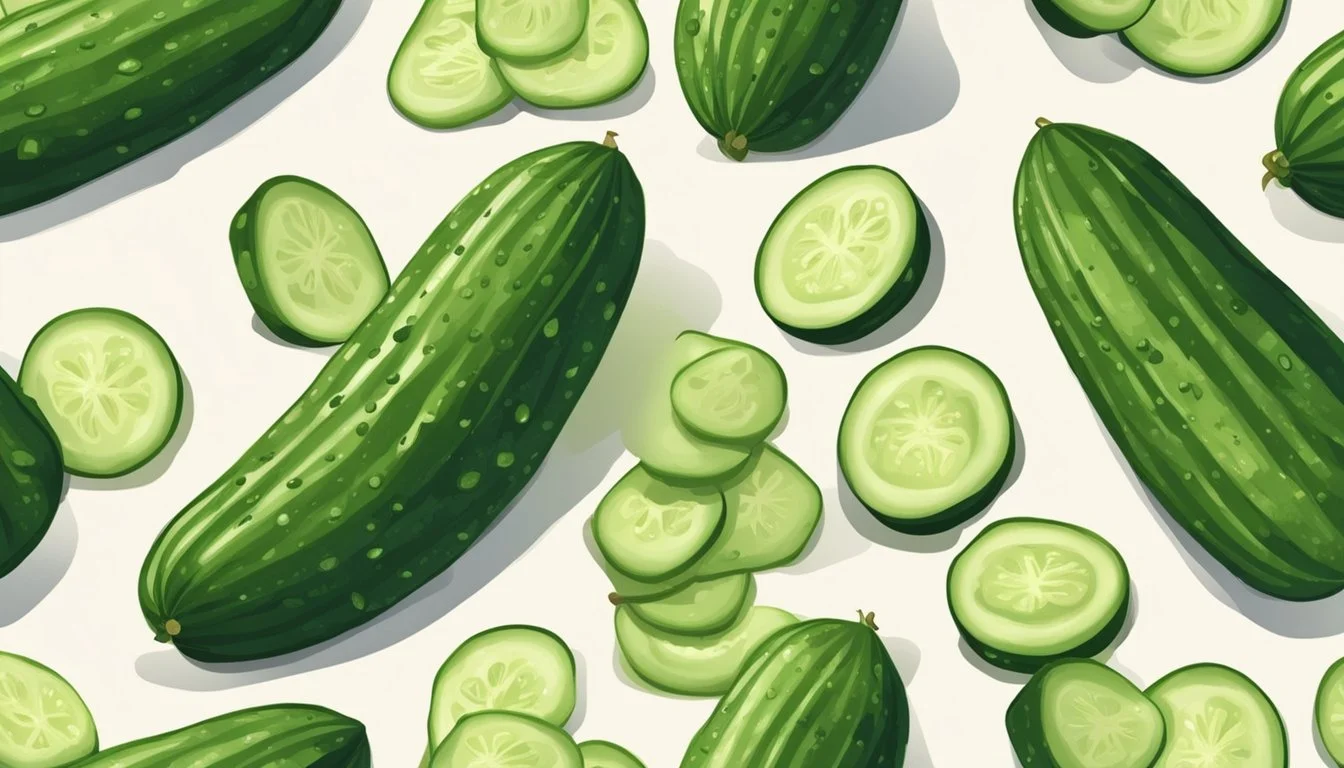Do Cucumbers Spoil?
Understanding Shelf Life and Storage Tips
Cucumbers, prized for their crisp texture and refreshing taste, are a staple in many diets. Yes, cucumbers do spoil due to their high water content and perishable nature. Knowing the signs of spoilage is crucial for ensuring freshness and safety in your meals.
Fresh cucumbers exhibit a firm texture and vibrant green color. Spoiled cucumbers, on the other hand, develop soft or mushy spots, a slimy surface, and unpleasant odors. Visual cues like mold or discoloration, including yellow or brown spots, are also indicative of spoilage.
By understanding these key signs, you can easily determine the freshness of your cucumbers and avoid consuming spoiled produce. This not only preserves the quality of your dishes but also safeguards your health.
Understanding Cucumber Spoilage
Cucumbers, like many fresh vegetables, are susceptible to spoilage due to various factors. Recognizing the causes and signs of spoilage can help maximize shelf life and prevent waste.
Causes of Spoilage
Several factors contribute to cucumber spoilage. Moisture is a primary culprit, as excessive humidity can encourage mold growth. Bacteria also play a significant role, thriving in moist environments and accelerating decay.
Exposure to ethylene gas, emitted by certain fruits, can hasten ripening and spoilage. Improper storage, such as leaving cucumbers in a tightly sealed bag without adequate airflow, exacerbates moisture retention and fosters a conducive environment for spoilage-causing organisms.
Signs of Spoilage
There are clear indicators that a cucumber has spoiled. Texture changes are often the first signs; a fresh cucumber should be crisp, but a spoiled one will feel soft or exhibit sliminess on the skin. Visual signs such as yellowing, dark spots, or patches of mold on the surface are also obvious warning signals.
Off odors—ranging from foul to sour—suggest that the cucumber is no longer desirable for consumption. If the cucumber is cut open, a watery or translucent interior indicates spoilage. All these signs point to the conclusion that the cucumber should be discarded to avoid the risk of foodborne illness.
Proper Storage Techniques
To maximize the shelf life of cucumbers and maintain their freshness, it is crucial to store them under the right conditions. This includes managing temperature and humidity, as well as using appropriate containers and wraps to minimize excess moisture.
Temperature and Humidity Control
Cucumbers should ideally be stored in the refrigerator at a temperature between 50°F and 54°F. This range prevents chilling injuries that can occur if it's too cold. High humidity levels, around 90% to 95%, are also important to keep cucumbers fresh.
Placing cucumbers in the crisper drawer of the fridge helps to control humidity. Avoid storing cucumbers directly in wet or damp areas, as this can lead to decay. It's essential to keep them dry to prevent mold and rotting.
Containers and Wraps
Using the right containers and wraps can significantly extend the lifespan of cucumbers. Airtight containers or resealable plastic bags work well for storing whole or sliced cucumbers. For extra moisture control, wrap cucumbers in paper towels before putting them in the container or bag. This absorbs any excess moisture and keeps the cucumbers dry.
When storing sliced cucumbers, it is best consumed within one to two days. For whole cucumbers, wrapping them individually in paper towels and placing them in sealed plastic bags can keep them fresh for up to a week.
Maximizing Freshness and Shelf Life
Cucumbers can be kept fresh and crisp for longer by using specific storage methods and handling practices. Key points include optimal refrigeration techniques and proper handling of sliced cucumbers.
Refrigeration Best Practices
Cucumbers thrive when stored at around 55°F (13°C). Storing cucumbers in the refrigerator is common, but they should be kept in the crisper drawer set to high humidity with the fan closed to retain moisture. Wrapping cucumbers in a paper towel and placing them inside an open bag can help maintain freshness and prevent them from getting soft or mushy.
Low temperatures below 40°F (4°C) can cause cucumbers to develop pitting and water-soaked spots. It's best to keep cucumbers away from ethylene-producing fruits like bananas and apples, as ethylenes can accelerate rotting. By following these practices, cucumbers can last between 1 to 2 weeks.
Handling Cut Cucumbers
When dealing with cut cucumbers, it's important to keep them in an airtight container. Placing sliced cucumbers on a damp paper towel inside the container helps retain their moisture, keeping them firm and fresh. It's advisable to consume sliced cucumbers within 2-3 days for peak freshness.
If only a portion of the cucumber is used, cover the cut end with plastic wrap to prevent it from drying out. Whole cucumbers with a cut end can last about 3-5 days in the refrigerator. Proper handling and storage significantly extend the shelf life and preserve the pleasant texture and flavor of cucumbers.
Alternative Storage Solutions
Sometimes cucumbers need alternative storage solutions to extend their shelf life or make use of excess produce. Two effective methods include freezing and pickling.
Freezing Cucumbers
Freezing cucumbers is practical for soups, stews, or even as an icy addition to cocktails. Begin by slicing the cucumbers into manageable pieces. Lay them out on a baking sheet to freeze individually before transferring them into airtight bags.
Blanching the cucumber slices before freezing can help preserve their texture. Flash-freezing the slices ensures they don’t stick together, making it easier to grab what you need later.
Once frozen, cucumbers can be stored for up to six months. However, they lose some crunch, so they’re best suited for cooked dishes or beverages rather than fresh salads or sandwiches.
Using Cucumbers for Pickling
Pickling cucumbers is an excellent way to preserve them and add tangy flavor. Start with a simple brine recipe: combine water, vinegar, salt, and your choice of pickling spices. For homemade pickles, sterilize jars to prevent bacterial growth.
Cut the cucumbers into desired shapes, such as spears or slices, and pack them into the jars. Pour the brine over the cucumbers, ensuring they are completely submerged.
After sealing the jars, they can be kept in the refrigerator or processed in a water bath for shelf-stable pickles. Pickling extends the shelf life significantly, making cucumbers a tasty addition to sandwiches, salads, or as a standalone snack.
Identifying and Using Overripe Cucumbers
Overripe cucumbers often become mushy and can have a bitter taste, but they can still be used creatively. Understanding the best ways to utilize these cucumbers can help reduce waste and create tasty dishes.
Utilizing Soft Cucumbers
Soft cucumbers can be repurposed into various dishes rather than being thrown away. When cucumbers begin to soften, slicing and stir-frying them with garlic, onions, and red peppers can create a fresh and colorful side dish. Alternatively, baking them with butter, herbs, and parmesan cheese offers a savory option with a unique texture.
Marinating soft cucumbers with a mix of vinegar, salt, and sugar also works well. Besides, these cucumbers can be blended into soups, such as cucumber-yogurt soup or green gazpacho, adding a refreshing twist. For a fancy touch, shredded cucumbers can be integrated into sauces like tzatziki.
Turning Bad Cucumbers into Pickles
One efficient method to handle bad cucumbers is by turning them into pickles. The pickling process starts with creating a brine of equal parts vinegar and water, augmented with salt, sugar, and dill. Cutting cucumbers into spears or chunks allows more to fit into each jar, increasing effectiveness.
This method not only preserves the cucumbers but also enhances their flavor. Homemade pickles can be used in sandwiches or as a tangy snack. This transformation maximizes the use of cucumbers that might otherwise be discarded, bringing their versatile nature to light. Pickled cucumbers maintain a balance of softness and fresh crunch, offering culinary delight.
Health and Nutritional Benefits
Cucumbers offer several health advantages due to their nutritious profile and high water content. These fresh veggies can be easily incorporated into salads and snacks to help improve daily nutrient intake.
Cucumbers in a Balanced Diet
Cucumbers can be an essential part of a balanced diet. They are low in calories and rich in essential vitamins and minerals. A typical cucumber provides vitamins K and C, potassium, and magnesium. Additionally, their low fat content makes them an ideal choice for those looking to manage their weight.
Incorporating cucumbers into meals, such as salads, can help enhance the overall nutrient density without adding excess calories. Their crunchy texture makes them a popular component in many dishes, promoting better dietary habits.
Benefits of High Water Content
A significant feature of cucumbers is their high water content, which constitutes about 95% of the vegetable. This makes them an excellent option for staying hydrated. Proper hydration supports various body functions, including regulating body temperature and maintaining healthy skin.
Eating cucumbers helps to deliver additional fluids, especially for those who may struggle with their daily water intake. This high water content also aids in digestion and can help prevent constipation. Including cucumbers in snacks or meals keeps one feeling refreshed, especially during warm weather.
Cucumber Varieties and Uses
Cucumbers come in several varieties, each suited for specific culinary uses. From salads to pickles, knowing the right type can enhance your dishes.
Common Types of Cucumbers
English Cucumbers: Often referred to as seedless cucumbers, they have a thin skin and mild flavor. Their almost seedless quality makes them excellent for salads and sandwiches.
Persian Cucumbers: These are small, thin-skinned, and often seedless. Known for their crisp texture, they are ideal for snacks and salads.
Pickling Cucumbers: Short and thick, with a bumpy surface, these cucumbers are designed for pickling. Their firm flesh holds up well in brines and vinegar.
Burpless Cucumbers: As the name suggests, these are easy to digest and less likely to cause burping. They have a mild taste and thin skin, fitting for eating raw or in salads.
Consider what recipe you are making to choose the optimal type.
Suitability for Different Recipes
Salads: For salads, English and Persian cucumbers are top choices. Their thin skin and fewer seeds make them easy to prepare.
Sandwiches: English cucumbers are excellent for sandwiches due to their consistent size and mild flavor. They can be sliced thinly without losing their crispness.
Pickling: The obvious choice here is pickling cucumbers. Their texture and size make them ideal for preserving. Use them in vinegar-based pickling recipes to achieve the best results.
Cocktails: Cucumbers can also be used in drinks. English cucumbers work well in cocktails because of their mild flavor, which doesn't overpower the mix.
Each variety offers unique qualities, making them suitable for specific recipes and uses.
Frequently Encountered Issues
Common concerns involving cucumbers include preventing softening during storage and avoiding cross-contamination with other foods.
Preventing Softening in Storage
Cucumbers often soften during storage due to improper handling and environmental conditions. Soft spots can develop when cucumbers are not kept in a cool, dry place. Ensuring they are stored in the refrigerator at temperatures around 50°F (10°C) helps maintain their crisp texture. Moisture is also a culprit; excess humidity can make cucumbers wet and soggy, promoting mold growth and rot.
Ethylene gas, emitted by fruits like bananas, tomatoes, and melons, accelerates ripening. Keeping cucumbers separate from these items can prevent them from softening too quickly. Dry the cucumbers thoroughly before storing them in the refrigerator, preferably wrapped in a paper towel and placed in a plastic bag with small ventilation holes.
Avoiding Cross-Contamination
Avoiding cross-contamination is crucial to maintaining cucumber quality. Cross-contamination with bacteria from other foods can cause soft spots and decay in cucumbers. It's important to wash cucumbers thoroughly under running water before use and store them away from raw meat and dairy products.
Using clean cutting boards and utensils helps prevent the spread of bacteria. Additionally, refrain from storing cucumbers next to ethylene-producing fruits to reduce the risk of accelerated spoilage. Proper hygiene and careful storage are key to extending the shelf life of cucumbers and keeping them safe to eat.





